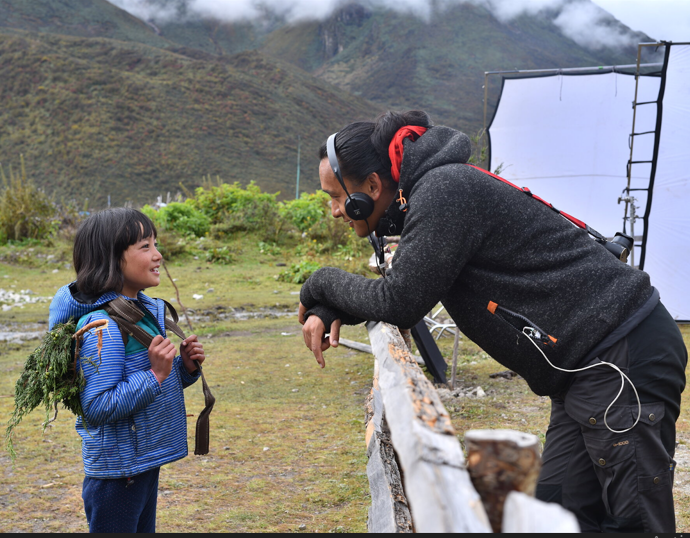Bhutan, the serene kingdom nestled in the Eastern Himalayas, is renowned for its stunning landscapes, rich culture, and the philosophy of Gross National Happiness. Amidst these wonders, Bhutan’s film industry has been quietly blossoming, offering a unique blend of tradition and modernity through its cinematic expressions. Exploring Bhutan through curated Bhutan Tour Packages is an excellent way to immerse yourself in the captivating environment that has inspired many Bhutanese filmmakers.
One of the many cultural highlights that Bhutanese films often depict is the country’s vibrant festivals. The Ura-Yakchoe Festival in Bhutan is a prime example. Held in the picturesque Ura Valley, this festival is a celebration of Bhutanese traditions, featuring mask dances, music, and rituals that have been passed down through generations. Experiencing such festivals provides a deeper appreciation of the cultural tapestry that influences Bhutanese cinema.
The Origins of Bhutanese Cinema
The Bhutanese film industry, often referred to as “Bhutanese Cinema,” began its journey in the late 20th century. The first Bhutanese feature film, “Gasa Lamai Singye,” directed by Ugyen Wangdi, was released in 1989. This film set the stage for the country’s cinematic aspirations, weaving traditional folklore with the nuances of contemporary storytelling.
Types of Bhutanese Films
Bhutanese cinema is diverse, encompassing several genres that reflect the country’s cultural tapestry and evolving societal dynamics:
1. Historical Dramas
Bhutanese filmmakers often delve into the rich history of the kingdom, depicting tales of valor, tradition, and historical events. These films not only entertain but also educate audiences about Bhutan’s past.
2. Spiritual and Folklore Epics
Themes of spirituality and folklore are deeply ingrained in Bhutanese culture. Films in this genre explore mythical tales, spiritual journeys, and the enduring values that define Bhutanese identity.
3. Romantic Comedies
Reflecting modern influences, romantic comedies in Bhutanese cinema offer light-hearted entertainment while navigating contemporary themes of love, relationships, and societal norms.
4. Social Commentaries
Some Bhutanese films serve as poignant social commentaries, addressing pressing issues such as urbanization, environmental conservation, and the impact of globalization on traditional lifestyles.
Evolution and Growth
In the following decades, Bhutanese cinema saw a gradual but steady growth. Filmmakers began exploring a variety of genres, from historical dramas to romantic comedies, reflecting the changing dynamics of Bhutanese society. One of the pivotal moments for Bhutanese cinema came with the release of “Travelers and Magicians” in 2003. Directed by Khyentse Norbu, this film garnered international acclaim and showcased Bhutan’s storytelling prowess to the world.
Cultural Significance
Bhutanese films often draw heavily from the country’s rich cultural heritage. Themes of spirituality, folklore, and traditional values are prevalent, providing a window into the Bhutanese way of life. The films serve as a medium to preserve and promote Bhutanese culture, especially in an era where globalization poses a threat to indigenous traditions.
The Role of Festivals
Film festivals play a crucial role in Bhutan’s cinematic landscape. The Bhutan International Festival, for instance, provides a platform for local filmmakers to showcase their work alongside international films. These festivals not only celebrate Bhutanese cinema but also encourage cross-cultural exchanges, fostering a deeper understanding of global cinematic trends.
Challenges and Opportunities
Despite its achievements, Bhutanese cinema faces several challenges. Limited resources, lack of technical expertise, and a small domestic market are some of the hurdles that filmmakers encounter. However, these challenges also present opportunities for innovation and collaboration. The digital revolution, for example, has opened new avenues for low-budget filmmaking and online distribution, allowing Bhutanese films to reach a wider audience.
Prominent Figures in Bhutanese Cinema
Several individuals have made significant contributions to Bhutanese cinema. Directors like Khyentse Norbu and Ugyen Wangdi have been instrumental in shaping the industry. Actors such as Tandin Bidha and Lhaki Dolma have become household names, bringing characters to life with their compelling performances.
Bhutan’s Unique Cinematic Voice
What sets Bhutanese cinema apart is its unique voice. The films often explore themes of spirituality and the human condition, reflecting the Bhutanese worldview. This distinct narrative style has resonated with audiences both locally and internationally, earning Bhutanese films a place in the global cinematic community.
The Future of Bhutanese Cinema
Looking ahead, the future of Bhutanese cinema appears promising. With increasing support from the government and private sectors, the industry is poised for further growth. Initiatives aimed at nurturing young talent and providing technical training are underway, ensuring that the next generation of Bhutanese filmmakers can build on the legacy of their predecessors.
Moreover, the global interest in Bhutan as a unique travel destination continues to rise. This growing international audience presents an opportunity for Bhutanese cinema to expand its reach and influence, sharing Bhutan’s stories with the world.
Conclusion
Bhutan’s film industry is a testament to the country’s rich cultural heritage and its ability to adapt to the changing times. From its humble beginnings to gaining international recognition, Bhutanese cinema has come a long way. As it continues to evolve, it remains a vital part of Bhutan’s cultural expression, offering audiences a glimpse into the heart and soul of this enchanting kingdom.
Whether you are a film enthusiast or a traveler seeking to explore new horizons, Bhutan promises a journey like no other. The films, festivals, and landscapes all come together to create a truly unforgettable experience, one that captures the essence of Bhutan’s unique charm and timeless beauty.


